Hey, software marketers. We’ve seen what you've been doing lately. No, no, not that, don’t get too worried.
It’s your software marketing. Those same old ad campaigns and content updates. Getting a bit tired, aren’t they? Not getting the results they used to, right?
When it comes to driving revenue with software marketing, you’ve got to keep up with what’s hot and keep your marketing campaigns moving.
It’s about trying new things, discovering what else is out there, and not letting yourself become stagnant or comfortable with whatever’s easy and familiar.
If you’re looking to spice up your strategy and know how to market software like a pro, we’ve got some gold for you. This is a deep-dive into winning methods to show you how to market software solutions.
It’s results-driven, it’s contextualized with real-world examples, and it’s hot off the press.
1. Tell A Story With Video
Video marketing isn’t just engaging, it’s addictive. If you’ve ever started watching an interesting YouTube video, only to find yourself deep down a space-doco tunnel an hour later, you’ll know what I mean.
Video has taken over the internet:
- Mobile video consumption rises by 100% each year
- 72% of customers would rather learn about a product or service via video
- 92% of people watching a video will share it with others
This medium has evolved to become a fundamental part of the average person’s life, and not just for entertainment’s sake. People turn to video for education, inspiration, and immersion into something they want to be part of.
Yes, it’s entertaining, but it’s entertainment with a purpose - and that’s what your software company can take advantage of with video marketing.
Sure, blogs are a great way to tell people how knowledgeable you are, explain why your software is important, and offer advice relating to using it. Blogs and written content are a must, the bread-and-butter of content marketing that every business worth their salt must do well.
But video is special. Video provides an immersive experience that written content will never match up against.
Why? Because it tells a story. Human beings are wired to connect with stories. The same oxytocin released in the brains of our ancestors around a fire is released in our brains when we watch a high-quality video advertisement.
In just minutes, a software company can share a story with a video that connects with their audience, agitates a pain point, and showcases their software solution.
Through voice, colours, music, animations, and real people sharing their experience emotionally, your software marketing becomes a living, breathing experience for customers.
You could be peddling the most advanced, AI-driven, Nerdy McNerd software, but you’re still selling it to humans at the end of the day. So, here’s how you use video storytelling to promote your products to the right people...
How To Market Software Products With Case Studies
A case study is a winning formula for marketing software products.
In just two to three minutes, a raving customer can explain to your audience what their challenges were, how your software helped them, and why they’d recommend your business.
A case study video helps you achieve the following marketing objectives:
- Customer self-identification
- Explanation of product features
- Demonstration of product benefits
- Establish trust and brand authority
Case studies work by introducing your audience to a living, breathing example of the kinds of customers that use and benefit from your services. People watching the video can relate to the featured customer, and maybe think to themselves ‘Hey! I experience those problems, too! That’s exactly what my business needs…’. Bingo, you’ve just got yourself a conversion.
This is called customer self-identification, it’s the same objective you’re aiming for with your SaaS landing pages, except with video people are more likely to watch the whole thing than read an entire page.
A case study video seamlessly explains and demonstrates your product features and benefits. In this case study from Salesforce, the software is presented in-context to show potential customers not only what it does - but how it can benefit their business.
Finally, the case study video builds trust in your audience by providing an authentic, real-world scenario from the perspective of a happy customer. Rather than an invasive paid advertisement, they get a genuine story from someone they can relate to.
So if you want to know how to sell software products, take advantage of storytelling with case study videos.
2. Give Away Free Stuff
Giving something away for free doesn’t mean you’re losing anything. Knowing how to market software solutions with free trials is a surefire way to get customers - and even if you lose a conversion, you’ll still gain valuable insights to improve your offering.
First, let’s start with the obvious. Software customers, especially for B2B software companies, need to see proof that your product works before they show you the money - or tell the boss about it.
In an industry where perceived value is the basis of customer decision making, a free trial is a perfect way to demonstrate that your software does what it says on the box. Customers are also delighted to be getting something for free.
Maybe your free trial isn’t getting you the conversions you were hoping for. People are rushing to sign up, but as soon as the trial ends - they ghost you and your sales team.
But if the top 27% of SaaS companies get 25% of their new customers from free trials, there must be a way to do it right.
We’ll show you how...
How To Market Software Solutions With A Free Trial
To maximize conversions with your free trial, follow these 3 guidelines:
- Don’t require credit card details for sign-ups
- Freemium or free trial?
- Follow-up with trial users
Firstly, we’ll start with sign-ups. So, what’s with the credit card details, then?
Well, if you want to know how to market software without turning customers off, the last thing you want to do is be scammy. Asking for someone’s payment details for a free thing just reeks of sneaky sneaky marketing.
You’re literally hoping that your customer forgets to unsubscribe before their 30-days is up so you can charge their credit card for a 12-month plan for something they might not want. Is that the relationship you want to build with your customers?
Opt-out free trials (that require a credit card) have a higher initial conversion rate, but this soon drops dramatically and opt-in free trials have a 20% higher conversion rate after 90 days.
By allowing customers to use a free trial without providing their credit card details up front, you’re backing the value of your product.
Secondly, let’s discuss freemium vs. free trial. Freemium is the unlimited free usage of your software with restricted functionality, as opposed to the short-term use of your software with full functionality.
SEMrush is the master of freemium. People can use the SEO tool for free, for as long as they want. However, they use clever tactics to encourage the customer to upgrade to a paid plan.
Users get a taste of what they can achieve with SEMrush, but the daily limit on activity is enough to stop them in their tracks - and be very tempted to upgrade to the paid plan.
CTA’s and swift fill-in forms make it easy to upgrade, so users can achieve full-functionality quickly.
SEMrush also keeps free trial users engaged with educational content that showcases what is possible with the premium membership.
But, unless you’re a market leader with a proven product, like SEMrush, freemium might not be the best option. Your customers might need to get a short-term trial of the whole thing to truly understand the value of your software, otherwise, they’ll go somewhere else.
Why People Say ‘No’ After Their Free Trial
Knowing how to market software successfully using a free trial requires the same knowledge of selling software directly to a customer - in person or on the phone. I’m not so much talking about the million-dollar smile or excellent banter, but the ability to handle objections like a boss.
That is, anticipating the reasons your customers will say ‘no’ and having a response ready to blow the excuse out of the water. It’s also about providing all the information in a way that prevents customers from even jumping to that objection.
So, let’s take a look at why customers say ‘no’ after a free trial, and how you can respond:
| Reason | Why it’s an issue | How to prevent |
|---|---|---|
|
Trial period is too long |
30-days is the standard free trial length in SaaS, but this might be far too much time for your prospect who needed a solution yesterday. |
Track the usage data. If prospects using their free trial drop-off after 14 days, this might be an ideal cut-off time for your software product. |
|
CTA’s point to free trial too early |
If the CTA’s on your home page point directly to the free trial, prospects don’t yet understand the value of your product before they click on the free thing. There’s not much intent behind their conversion. |
Leverage educational and valuable content before the free trial. Prospects learn about your product and why it’s beneficial first, so they’re already half-convinced before choosing the free trial. |
|
You’re not nurturing |
Prospects must be given inspiration, education, and value while they’re on the free trial. Otherwise, they’ll become uninterested. |
Set-up an email marketing campaign to send insights and education. This keeps prospects engaged and helps them get the most value from their free trial. |
|
Customers need a demo |
A free trial is awesome, but prospects need to know how to use the software for their unique needs. |
As soon as a prospect signs up, send an email asking why they are using the free trial. From their response, your team can create a short demo video to help them get the most value from their trial. |
If you’re having trouble with your free trial conversion rate, or want to make informed decisions from your data, it might be wise to bring in a specialised SaaS marketing agency for guidance.
3. Delight Users With Interactive Tools
Interactive content has evolved to become a powerful marketing tool for software companies. Not only does it offer personalized value to each user, but interactive content also creates a deeper level of engagement with your audience for higher quality SaaS lead generation.
To understand the marketing potential of interactive tools, think about the last time you did a quiz on Buzzfeed. Sure, they’re a bit cringy and farfetched, but 96% of users that start a Buzzfeed quiz will finish it.
That’s an insane amount of people who want to know the Zodiac sign of their future partner based off their snack preferences. I just spent the last fifteen minutes discovering that my obsession with peanut butter leads to a Libra. I’m a mature adult, why did I do that?
Because I’m vain. People are vain. They like to receive information that is about them and personalized to their needs, and they like to feel seen and heard by the companies they buy from.
That’s why interactive content gets a 30-40% average conversion rate, compared to 8-10% for landing pages and 2-3% for website forms.
Because it’s...
- Interesting,
- Educational, and
- Unique
But also…
- Personalized
- Easy-to-use, and
- Fun!
If you want to know how to market software effectively, interactive content is going to be your next conversion winner.
How To Market Software With Quizzes, Calculators, & Animations
You might think that your highly-technical software product is impossible to understand without a 5-page scientific whitepaper. But, what if you filtered the most interesting facts and findings through an interactive quiz, or a CPM calculator? Boom. Now users can discover the value of your product with a brief but entertaining activity.
So, let’s walk-through some common types of interactive content.
| Type | Features | Benefits | Example |
|---|---|---|---|
|
Quiz |
A short quiz (no more than 15 questions) about the pain point that your software solves or the scientific analysis behind its development. If you sell multiple software solutions, the quiz could also diagnose the best fit for the user. |
Many people love to be challenged and love to be right. By testing their knowledge, they can learn about the value of your product and discover a solution they’d never heard of before. Plus, you can track their answers to gain valuable insights into your audience. |
|
|
Calculator |
A simple tool that helps users make a purchase decision based on personalized data. |
Calculators give users valuable data without having to consult with a salesperson or do their research. With an intelligent calculator, you can show users the costs they could save with your product or the ROI their company could make with your product. |
|
|
Animation |
Website animations vary greatly, but they include interactive elements with clicks and click-and-drags to make content more engaging and simplify complex ideas. |
Animations allow the software company to share and uniquely explain their USP. Customers are far more receptive to information that they can interact with. |
Our home page! |
4. Nurture Existing Customers
Be honest. Do you keep in touch with prospects after they become customers? Or do you take them out of your automated campaigns and assume they’ll stay?
Do you want to know how to market software effectively? Well, one of the most successful yet overlooked methods to increase revenue is by marketing to your current customers.
Think about it, how much potential revenue do you lose annually due to churn?
The annual churn rate for software companies making less than $10 million per year is 20%. That’s a huge loss that could largely be prevented by anticipating reasons for churn and mitigating them with valuable marketing strategies.
I’ll cover 3 ways to reduce churn by marketing to existing customers:
- Create a customer portal
- Implement a meaningful nurture program
- Build a community for your customers to belong to
I’ll be using a few examples from Hnry - a financial software program for freelancers in New Zealand.
How To Market Enterprise Software By With Your Customer Portal
When customers commit to your software solution, either as a personal user or for their business, they’ll likely be logging on regularly.
The way you design the UX of your customer portal will influence customer retention. Intelligent automation consulting can help optimize this process by streamlining repetitive tasks and improving user interaction, creating a seamless experience for customers. Think about it, you want to make your customer feel ‘at home’ with your product as quickly as possible, as well as offering helpful advice and opportunities to upsell (if there are multiple subscription options).
Hnry’s customer portal combines the service of a tax agent, an accountant, a bank account, and a business consultant into one user-friendly software.
(Some data is blurred out for privacy reasons)
The customer portal features an overview of the user’s business performance, as well as opportunities to get in touch with the Hnry team to ask questions or request assistance.
The portal features a live chat in the bottom-right corner, where Hnry’s team responds within a few hours.
This supportive customer portal is perfect for Hnry’s target audience of busy freelancers who need a third-party provider to take care of all their accounting and taxes.
Churn-rate is prevented by the high-touch customer portal that ensures customers feel they can reach out with any questions or feedback.
How To Market Software Products With A Customer Nurture Program
Do not remove your new customer from your SaaS marketing automation program or automated email campaign! Don’t do it!
Instead, create a new campaign that sends current customers high-value blogs, videos, and demonstrations including:
- Ways to get the most out of your software product
- Case studies or success stories with other customers
- Industry-related advice
- Quizzes
- Webinars
By tracking the responses of your current customers, you’ll gain insights into what additional features or services they might want to upgrade to, as well as valuable feedback you can use to improve your product.
By receiving continuous updates and reassurance from your company, customers keep you front-of-mind and will probably continue to get value from your software.
Let’s look at Hnry. So, a freelancer signs up to Hnry and gets their first payment using the platform. They receive this email, congratulating them on their win and offering further advice:
Hnry obviously has an intelligent automated email set-up to congratulate customers after certain milestones. The personal and supportive nature of the email makes customers feel seen and understood, which is an excellent way to re-market to current customers.
How To Market Software Products By Building A Customer Community
By making sure your customers have personalized and meaningful interactions with your software company, you’ll build a sense of community that they’ll be reluctant to leave.
These days, people love to feel part of something. Whether that’s a basketball team, a political party, or a plant-based diet.
Sure, this obsession with affiliation can descend into tribalism - but I don’t think the world of software is going to see much of that. Unless Microsoft declares war on Apple or something.
But if you find ways to build a community for your customers, people will feel proud to be part of your brand, be more likely to share their success with others and less likely to churn.
Sometimes customer communities pop-up on their own, such as Facebook groups and subReddit pages. If that’s the case, you can nurture these groups as forums for feedback and for announcing your latest product updates, new whitepapers or other forms of content, or even just to keep a conversation going.
5. Invest In Your Website
Our last point of discussion is the importance of a high-quality website. If you want to know how to market a software product to companies, you can’t get away with having a below-par website.
We’ve covered the importance of software websites a lot, and if you need some SaaS website design inspiration we’ve got plenty.
That’s because building a website for a software product is extremely difficult. The design should have:
- Seamless UX
- Effective colour scheme
- Perfect placement of content and images
- Animations
- Interactive content
- Clean features without distraction
- Unlike any of your competitors!
Then there’s the copy. Software website copy has to be precise, concise, and easy to understand.
For a software marketer, achieving these three things might seem impossible when you’re selling a complex, multifaceted software tool that appeals to numerous customer personas at once.
But there are some killer software websites out there, so we’ll provide some advice to help you kill bounce rates and maximise conversions with your website.
How To Market Enterprise Software With Your Landing Pages
Your landing page is defined by psychology, aesthetics, and functionality. That means that it’s…
- Backed by in-depth knowledge of your target audience’s needs and behaviour
- Dressed to impress with features and content that inspires
- Built for effortless navigation that shows only the most valuable content
To turn a visitor from an unengaged browser into an activated buyer, your landing page must capture attention, quickly communicate your value proposition, and lead users to self-identify as the target audience - “This is exactly what I need”.
Check out this pretty lil’ above the fold section from Toggl:
So let’s break down the landing page into its essential parts, so you can see how to market software solutions with design and words that work.
| Section | Features | Purpose |
|---|---|---|
|
Above The Fold |
|
The ‘hero copy’ ie. a line that sums up your value proposition and immediately communicates what your software does for customers. This is the show-stopper at the top of every SaaS landing page. |
|
Social Proof |
|
Showing off the logos of the big brands that you work with immediately builds trust in your brand, and visitors are tempted to become part of a community with other high-flying users. |
|
Features & Benefits |
|
This section defines the content in your services pages down to the main messages that showcase what your software can do for customers. |
|
CTA’s |
|
Using CTA’s strategically throughout the landing pages reinforces the need for customers to take the next step, find out more about your product, or try it for themselves. |
|
Testimonial |
|
Builds trust and tells a story to engage customers and help them identify with the pain point you’ve solved for others. |
|
Buyer Personas |
|
Directly calling out your customer persona helps users to immediately work out if your product was made for them. By helping users to self-identify and pointing them to more personalized content, you’re boosting your click-through rates. |
We’ve gone to the trouble of reviewing the 10 best SaaS landing page design examples, so check those out if you need some inspiration and context behind the above definitions.
Conclusion: Learning How To Market Software Effectively Takes Time (And, Sometimes, Balls)
The five strategies we’ve discussed have worked wonders for both market leaders and up-and-coming software startups. But, that doesn’t mean you can just change tac next Monday and start seeing results.
We understand that changing up your marketing strategy can be daunting. It’ll take careful planning, consistent testing and tweaking, and a willingness to start again if something doesn’t work.
If your software marketing needs some extra muscle, or you’d like to know how to market software more ambitiously and strategically, give us a buzz.

Chris Onyett
Chris is one of the managing partners at Roketto. His area of expertise is digital marketing and loves sharing and educating on topics like Google Ads, CPC bidding tactics, Google Analytics, and marketing automation. When Chris isn't in the office, he enjoys playing volleyball, mountain biking, and hiking with his American Eskimo.












2.png)
2.png)









